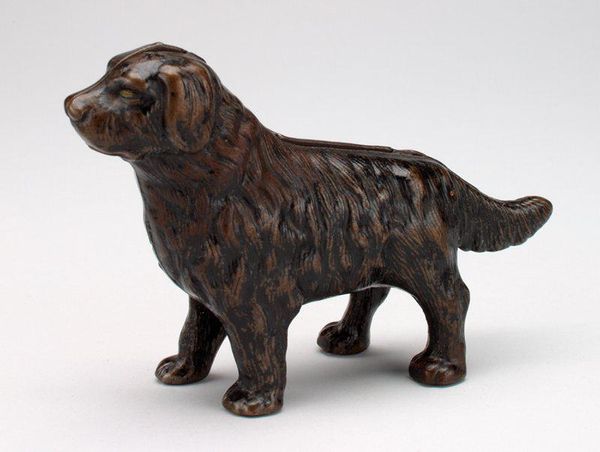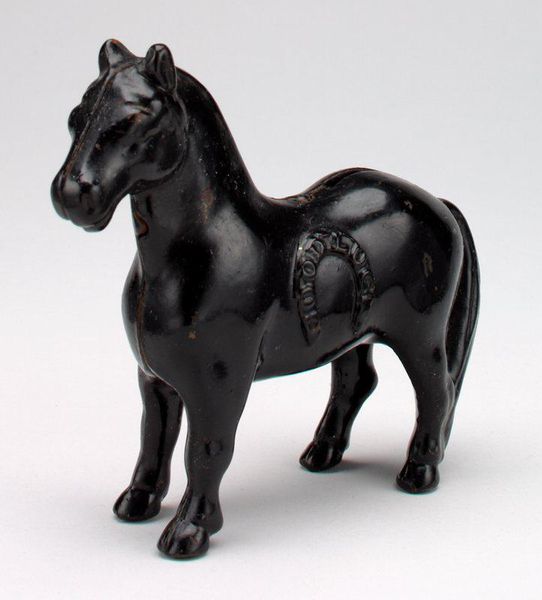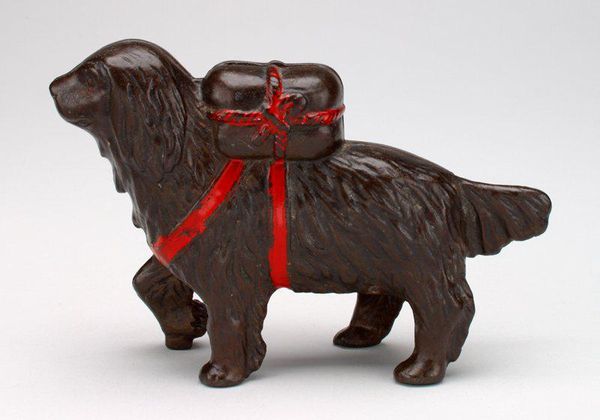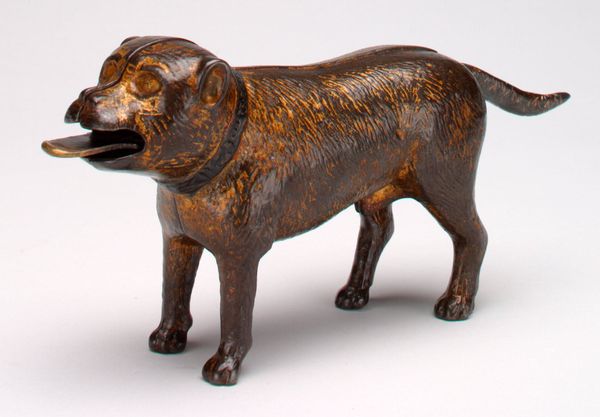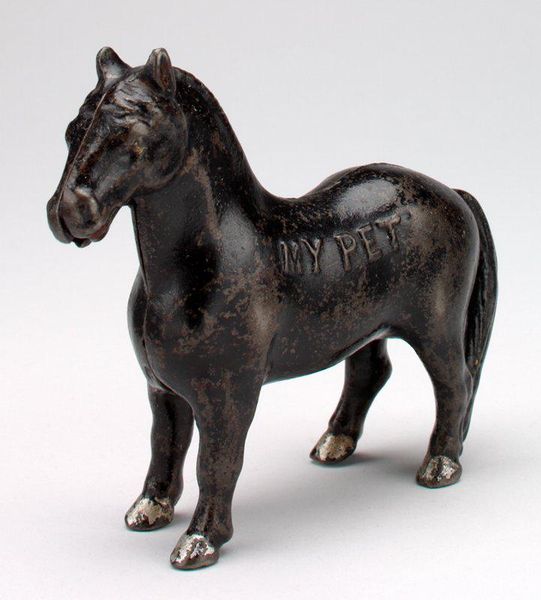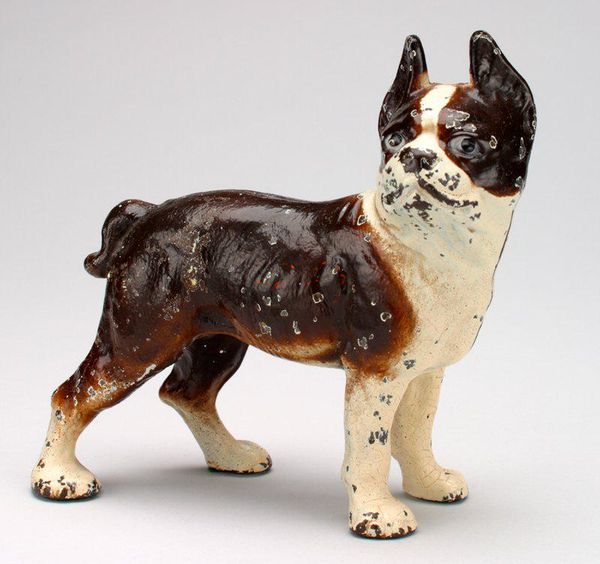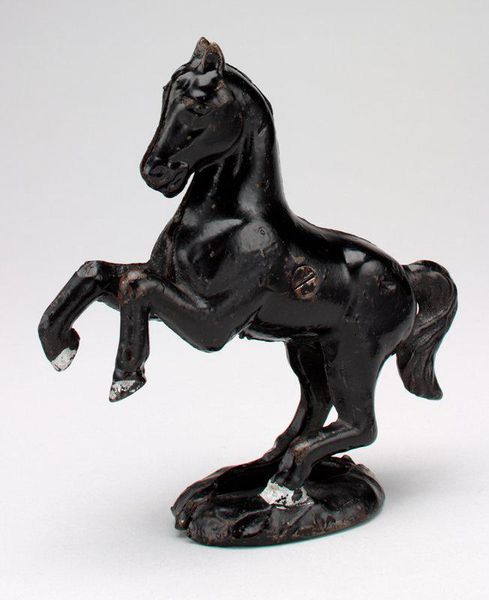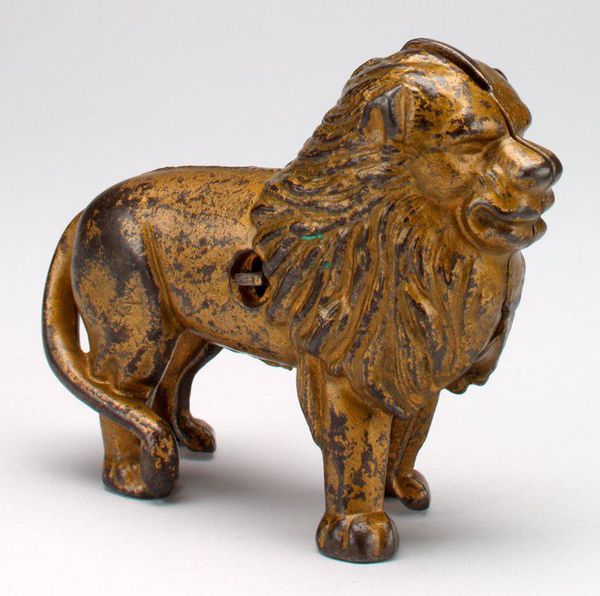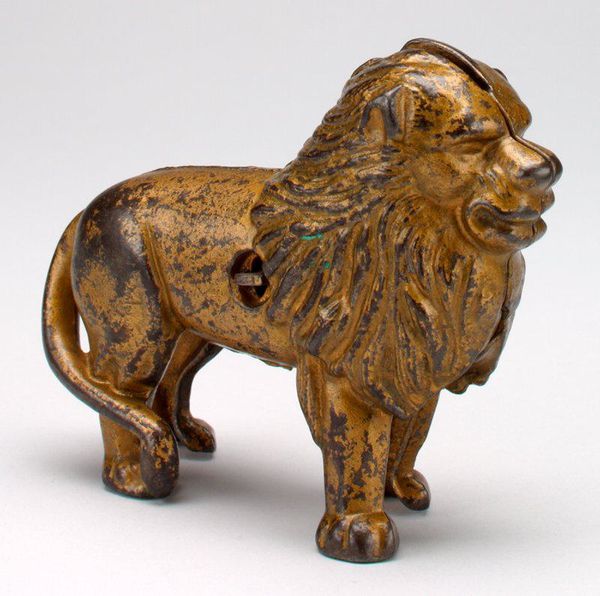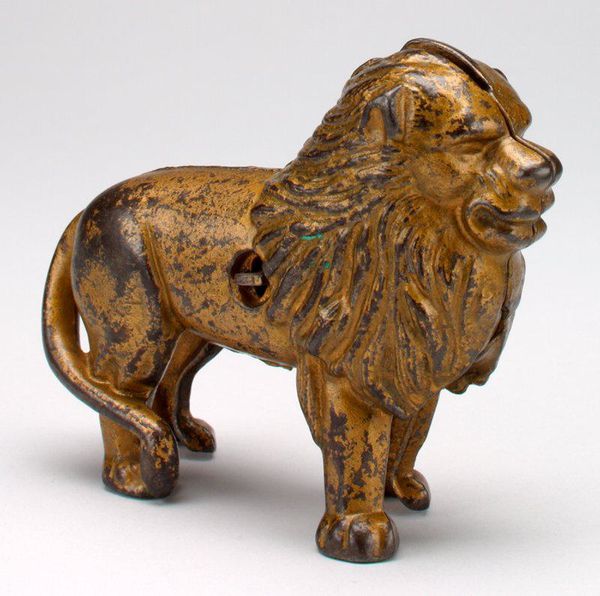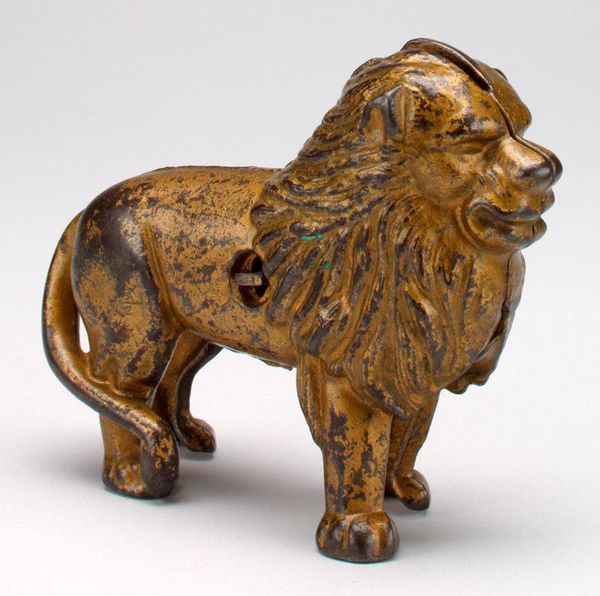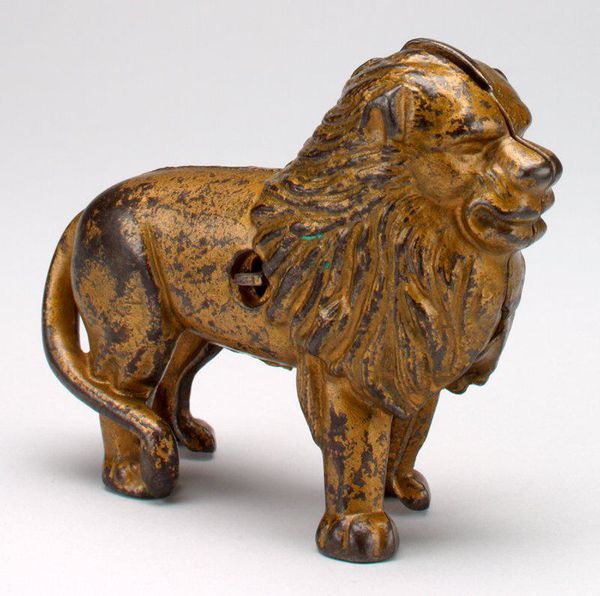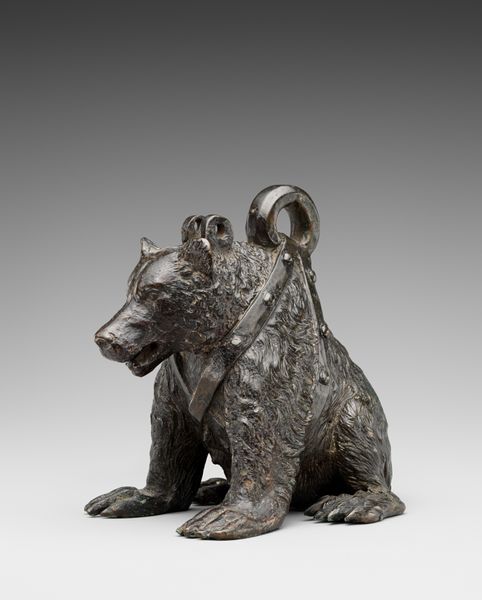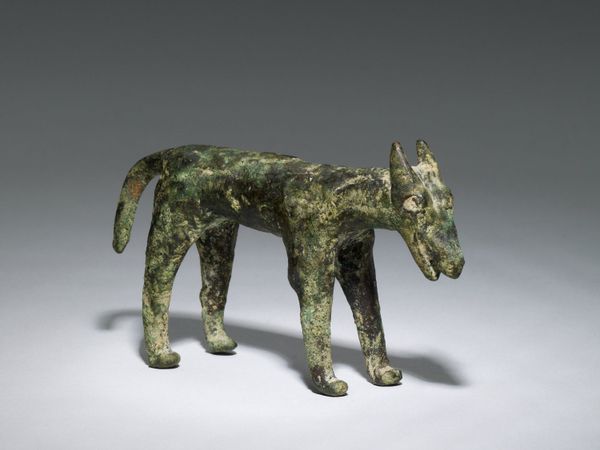
bronze, sculpture
#
animal
#
sculpture
#
bronze
#
figuration
#
sculpture
#
realism
Dimensions: 5 9/16 x 8 1/4 x 1 5/8 in. (14.13 x 20.96 x 4.13 cm)
Copyright: No Known Copyright
Editor: Here we have -St. Bernard with Pack, made by the A.C. Williams Company sometime between 1901 and 1939. It's a bronze sculpture, and it feels very solid and grounded to me. What stands out to you about this piece? Curator: What interests me most is the interplay between the inherent nobility suggested by the St. Bernard breed and the industrial means of its production. We're looking at bronze, a material associated with grand sculpture, yet formed by a company more known for its involvement with manufactured goods, right? Think about the mold-making process, the division of labor… How does this tension influence your understanding of the sculpture's subject? Editor: That’s interesting – I hadn’t considered that! It's like taking a symbol of natural heroism and putting it through a very human, industrial process. Does that downplay the heroism, or change it somehow? Curator: Perhaps. Or, perhaps, it democratizes it. A bronze sculpture, traditionally reserved for the elite, becomes accessible, a mass-produced object embodying notions of loyalty and service. What does it tell us about early 20th century aspirations of working classes or the shifting boundaries between fine art and industrial design? It is important to think how consumerism played into its construction. Editor: So, thinking about the process makes it less about the dog itself and more about the people who made it, and the people who would have bought it? Curator: Exactly. It’s not simply about representing a dog, but about understanding the conditions under which this representation was produced and consumed. These methods challenge our assumptions about originality and authorship and remind us of the socio-economic systems intertwined within art. Editor: I never would have looked at a bronze dog sculpture this way. It makes you consider labor and class dynamics! Curator: Precisely! Now when you see the sculpture, it can make you wonder: what kind of person sought this? And what processes allowed such art to proliferate through culture?
Comments
No comments
Be the first to comment and join the conversation on the ultimate creative platform.
